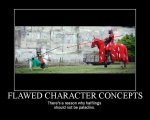Probably because I'm old I would never consider a Halfling Paladin, and yet... that sounds fun.
With the 3rd Ed Forgotten Realms setting, halfling paladins became a thing. Made sense because the big patron goddess of halflings, Yondalla, is lawful good.
Even better, halfling paladin/monks became a thing, and had their own order. Fists of justice, baby!
Okay, back to the original question, let's break down martial damage at level 3. Let's assume STR is 14, Dex 16:
Barbarian - When raging, you can dual wield for 2d6 + STR + 4 = 13 (10 when not raging)
Fighter - Action surges are fun, but most rounds you'll get the best from dual wielding 2d6 + 2*DEX = 13 (+6.5 on a surge per short rest)
Rogue - Dual wielding 4d6 + DEX = 17 (31 on a surprise round)
Paladin - Duel wielding for 2d6 + DEX = 10 (+9 for each smite, three smites per long rest)
Monk - 1d6 + 1d4 + 2*DEX = 12 (+5.5 on a flurry, 3 times per short rest)
Ranger - Messiest for last. Dual wielding 2d6 + 2*DEX = 13 (-3 if you apply Mark, +7 if Mark is already applied, +4.5 if target is bloodied or +6.5 if adjacent foe)
Conclusions: For burst damage, assassin wins in a surprise round, paladin wins if you are able and willing to burn spell slots. But paladin lags considerably in sustained damage output, while rogue is the king (as long as advantage/adjacent ally holds up).
In fact, in a day with two short rests where smites are rationed, the fighter will have very comparable burst damage and much better sustained damage than a paladin.
I'd say the monk does even better, being only slightly behind on sustained damage compared to fighter, but being able to burst 9(!) times on a day with two short rests. Almost rogue-like in damage reliability.
Special shout out goes to ranger, with solid sustained damage, and situational damage bursts that are very efficient with resources and can rival a fighter surge, or even a smite spamming paladin, when conditions are right.

